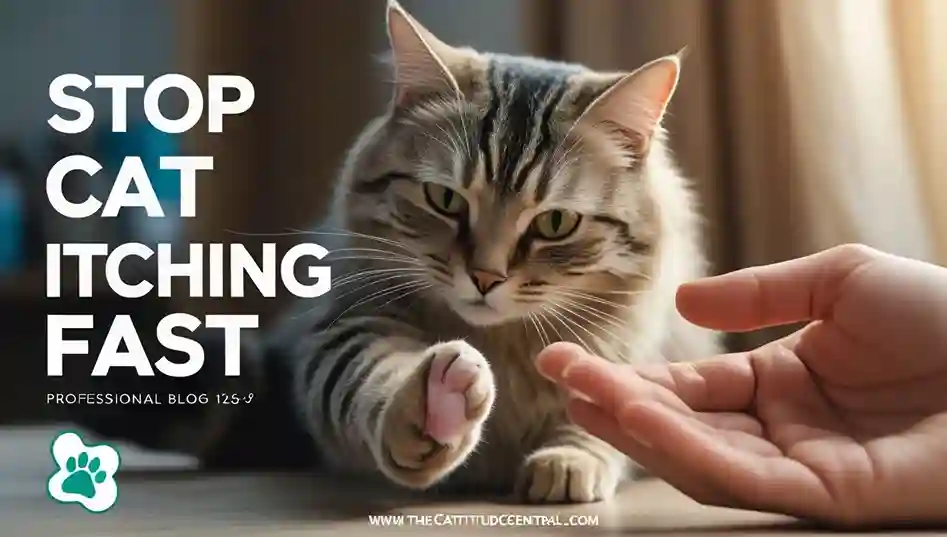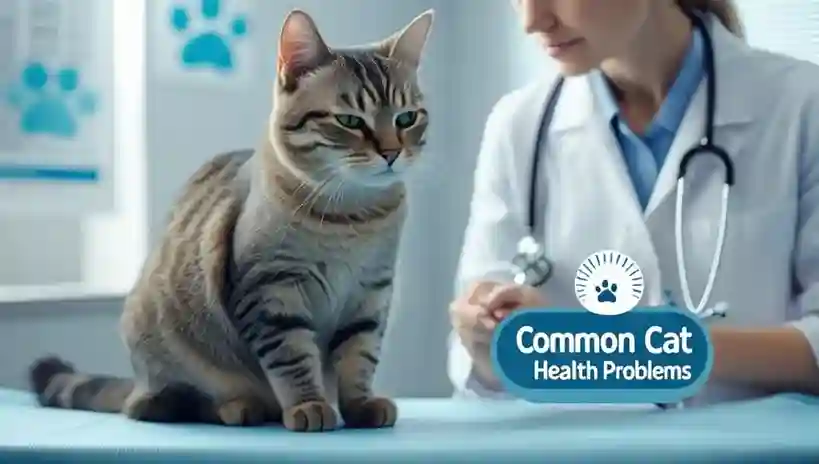Cat grass is more than just a trendy pet accessory—it’s a nutritious, natural treat that can enhance your feline’s health and happiness. This lush green plant, often grown from seeds like wheatgrass, oat grass, or barley grass, offers cats a safe way to satisfy their grazing instincts. Whether you’re a seasoned cat parent or a new pet owner, understanding the benefits of grass and how to incorporate it into your cat’s routine is essential.
In this comprehensive guide, we’ll explore why cat grass is a must-have, how to grow it at home, its health benefits, and the best Amazon products to make it easy. Plus, we’ll answer common FAQs sourced from Google Trends to address your burning questions about grass.
What Is Cat Grass?
Cat grass refers to a variety of safe, edible grasses grown specifically for cats to nibble on. Typically made from seeds of wheat, oats, barley, or rye, grass is soft, non-toxic, and easy for cats to digest. Unlike outdoor grass, which may be treated with pesticides or harbor parasites, grass is cultivated indoors to ensure it’s safe for feline consumption. The texture and flavor of grass appeal to cats, encouraging them to chew it instead of potentially harmful houseplants.
Cat grass serves multiple purposes: it satisfies a cat’s natural urge to graze, aids digestion, and provides essential nutrients. Many cat owners turn to grass to prevent their pets from chewing on toxic plants or to help indoor cats connect with their natural instincts. With its rising popularity, grass is now widely available through products like seed kits and pre-grown pots on Amazon, making it accessible for every cat household.
Why Cats Love Cat Grass
Cats are obligate carnivores, but their curiosity often leads them to nibble on grass. This behavior stems from their wild ancestors, who consumed grass to aid digestion or expel indigestible matter like fur or bones. Grass mimics this natural behavior, offering a safe alternative to outdoor grass. Here’s why your feline friend might be drawn to grass:
- Instinctual Grazing: Cats have an innate desire to chew on grass, which grass satisfies without the risks of outdoor plants.
- Digestive Aid: Grass can help cats pass hairballs or improve digestion by adding fiber to their diet.
- Mental Stimulation: Chewing on grass provides sensory enrichment, keeping indoor cats engaged.
- Nutrient Boost: Grass contains vitamins, minerals, and chlorophyll, which may support overall health.
By providing grass, you’re catering to your cat’s natural instincts while promoting their well-being.
Health Benefits of Cat Grass
Cat grass isn’t just a fun treat—it offers tangible health benefits for your feline companion. Here are some key advantages of incorporating grass into your cat’s routine:
Supports Digestive Health
Grass is rich in fiber, which can help regulate your cat’s digestive system. Chewing on grass may assist in moving hairballs through the digestive tract, reducing the likelihood of vomiting or intestinal blockages. According to a study published in the Journal of Feline Medicine and Surgery, dietary fiber can improve gut motility in cats, making grass a valuable addition to their diet.
Provides Essential Nutrients
Grass, particularly wheatgrass or oat grass, contains vitamins A, C, and E, as well as minerals like iron and calcium. These nutrients support immune health, skin, and coat condition. Chlorophyll in grass may also act as a natural detoxifier, helping to cleanse your cat’s system.
Reduces Stress and Boredom
For indoor cats, grass offers mental stimulation, reducing stress and boredom. The act of chewing and exploring the grass engages their senses, providing a natural outlet for their curiosity. This is especially important for cats in small apartments or homes without access to outdoor spaces.
Prevents Toxic Plant Consumption
Many houseplants, like lilies or pothos, are toxic to cats. Grass provides a safe alternative, diverting their attention from dangerous plants. By offering grass, you can protect your cat from accidental poisoning while satisfying their grazing instincts.
How to Grow Grass at Home
Growing grass at home is simple, cost-effective, and rewarding. With a few basic supplies, you can cultivate a fresh supply of grass for your feline friend. Here’s a step-by-step guide to get started:
Read More: Fix Dehydration in Cats Now!
Step 1: Choose Your Seeds
Select high-quality grass seeds, such as wheatgrass, oat grass, or barley grass. These are widely available on Amazon, with popular options like The Cat Ladies Organic Cat Grass Kit or Pet Greens Self-Grow Cat Grass Kit. Ensure the seeds are organic and free from pesticides or chemical treatments.
Step 2: Gather Supplies
You’ll need:
- A shallow container or pot with drainage holes
- Organic potting soil or a soilless growing medium
- Grass seeds
- Watering can or spray bottle
- A sunny spot or grow light
Step 3: Plant the Seeds
- Fill the container with 1-2 inches of soil or growing medium.
- Sprinkle a dense layer of grass seeds evenly across the surface.
- Lightly cover the seeds with a thin layer of soil (about ¼ inch).
- Gently water the soil until it’s moist but not soggy.
Step 4: Care for Your Grass
- Place the container in a sunny location or under a grow light. Grass thrives with 4-6 hours of indirect sunlight daily.
- Water daily to keep the soil moist, using a spray bottle to avoid overwatering.
- Within 3-5 days, you’ll see sprouts. Grass is typically ready for your cat to enjoy in 7-10 days.
Step 5: Maintain and Harvest
Once the grass reaches 4-6 inches tall, it’s ready for your cat to nibble. Trim the grass to maintain its freshness, and replace it every 2-3 weeks to ensure a steady supply. If mold develops, discard the grass and start a new batch.
Top Amazon Products for Grass
For cat owners who prefer convenience, Amazon offers a variety of cat grass products, from seed kits to pre-grown pots. Here are some top picks to consider:
The Cat Ladies Organic Cat Grass Kit
This all-in-one kit includes organic wheatgrass seeds, a reusable planter, and soil discs. It’s easy to grow and produces lush cat grass in just a week. Priced at around $15, it’s a budget-friendly option for beginners.
Pet Greens Self-Grow Cat Grass Kit
Pet Greens Cat Grass kit features a blend of wheat, oats, and barley for a diverse grass mix. It comes with a self-contained tray, making it mess-free and ideal for small spaces. Available on Amazon for approximately $20.
Catit Sprout Tower
For a more stylish option, the Catit Sprout Tower is a vertical planter that grows grass while doubling as a decorative piece. It’s priced at around $25 and is perfect for cats who love to explore.
SmartyKat Sweet Greens Cat Grass Kit
SmartyKat Sweet Greens Grass Kit affordable kit (around $10) includes organic oat seeds and a compact growing tray. It’s a great choice for cat owners looking for a simple, no-fuss option.
When choosing a product, check customer reviews to ensure quality and ease of use. Always opt for organic, non-toxic options to keep your cat safe.
How to Introduce Grass to Your Cat
Introducing grass to your feline friend is straightforward, but some cats may need time to warm up to it. Follow these tips to ensure a smooth transition:
- Place It Strategically: Position the grass in an area your cat frequents, like near their food bowl or favorite lounging spot.
- Encourage Exploration: Gently rub the grass to release its scent, enticing your cat to investigate.
- Monitor Consumption: Some cats may overindulge, leading to vomiting. Limit access initially to gauge their reaction.
- Keep It Fresh: Replace wilted or chewed grass regularly to maintain your cat’s interest.
If your cat doesn’t take to grass immediately, be patient. Some felines need a few days to develop a taste for it.
Common Mistakes to Avoid with Cat Grass
While grass is easy to grow and maintain, there are a few pitfalls to watch out for:
- Overwatering: Too much water can lead to mold or root rot. Use a spray bottle to control moisture levels.
- Using Non-Organic Seeds: Non-organic seeds may contain pesticides harmful to cats. Always choose organic grass seeds.
- Ignoring Freshness: Grass loses its appeal as it wilts. Replace it every 2-3 weeks to keep it enticing.
- Placing in Direct Sunlight: Excessive sunlight can dry out grass. Opt for indirect light to maintain healthy growth.
By avoiding these mistakes, you can ensure your cat enjoys fresh, safe grass year-round.
FAQs About Cat Grass
Here are answers to common questions about grass, sourced from Google Trends and popular pet forums:
Is Cat Grass Safe for All Cats?
Yes, grass is generally safe for most cats when grown from organic, non-toxic seeds. However, cats with sensitive stomachs may vomit if they overeat. Introduce grass gradually and consult your veterinarian if your cat has dietary restrictions.
How Often Should I Give My Cat Grass?
Offer grass a few times a week, allowing your cat to nibble as desired. Monitor their consumption to prevent overeating, which can cause digestive upset.
Can Cat Grass Replace My Cat’s Regular Diet?
No, grass is a supplement, not a replacement for a balanced feline diet. It provides fiber and nutrients but lacks the protein and other essentials cats need from their primary food.
Why Does My Cat Vomit After Eating Cat Grass?
Some cats vomit after eating grass due to its fiber content, which can help expel hairballs. If vomiting is frequent or excessive, reduce access and consult a vet to rule out underlying issues.
Can I Grow Cat Grass Outdoors?
While possible, growing grass outdoors increases the risk of pesticide exposure or contamination. Indoor cultivation is safer and ensures the grass is free from harmful substances.
Integrating Cat Grass into Your Cat’s Routine
To make grass a regular part of your cat’s life, consider these tips:
- Rotate Varieties: Alternate between wheatgrass, oat grass, and barley grass to keep your cat interested.
- Combine with Play: Place grass near interactive toys to create a stimulating environment.
- Monitor Health Changes: Observe how grass affects your cat’s digestion, energy levels, and coat condition. Adjust usage based on their response.
- Pair with Amazon Products: Use kits like the Cat Ladies Organic Grass Kit for consistent quality and convenience.
By making grass a fun and regular feature, you can enhance your cat’s physical and mental well-being.
Cat Grass and Environmental Enrichment
Indoor cats often lack the stimulation of outdoor environments, making grass an excellent tool for enrichment. Beyond its health benefits, grass engages your cat’s senses, encouraging exploration and play. Pairing grass with other enrichment tools, like scratching posts or puzzle feeders, creates a dynamic environment that keeps your cat happy and active.
Where to Buy Quality Cat Grass Products
Amazon is a reliable source for grass products, offering a range of kits and pre-grown options. When shopping, prioritize organic, non-GMO seeds and read reviews to ensure product quality.
Always verify that the product meets safety standards and is designed specifically for feline use.
Conclusion
Grass is a versatile, affordable, and beneficial addition to any cat owner’s toolkit. From aiding digestion to providing mental stimulation, grass supports your cat’s health while satisfying their natural instincts. Whether you grow it at home or purchase a ready-to-use kit from Amazon, cat grass is a simple way to enhance your feline’s quality of life.
By following this guide, you can confidently introduce grass to your cat, avoid common mistakes, and choose the best products to keep them happy and healthy. Start growing grass today and watch your feline thrive!
Sources



